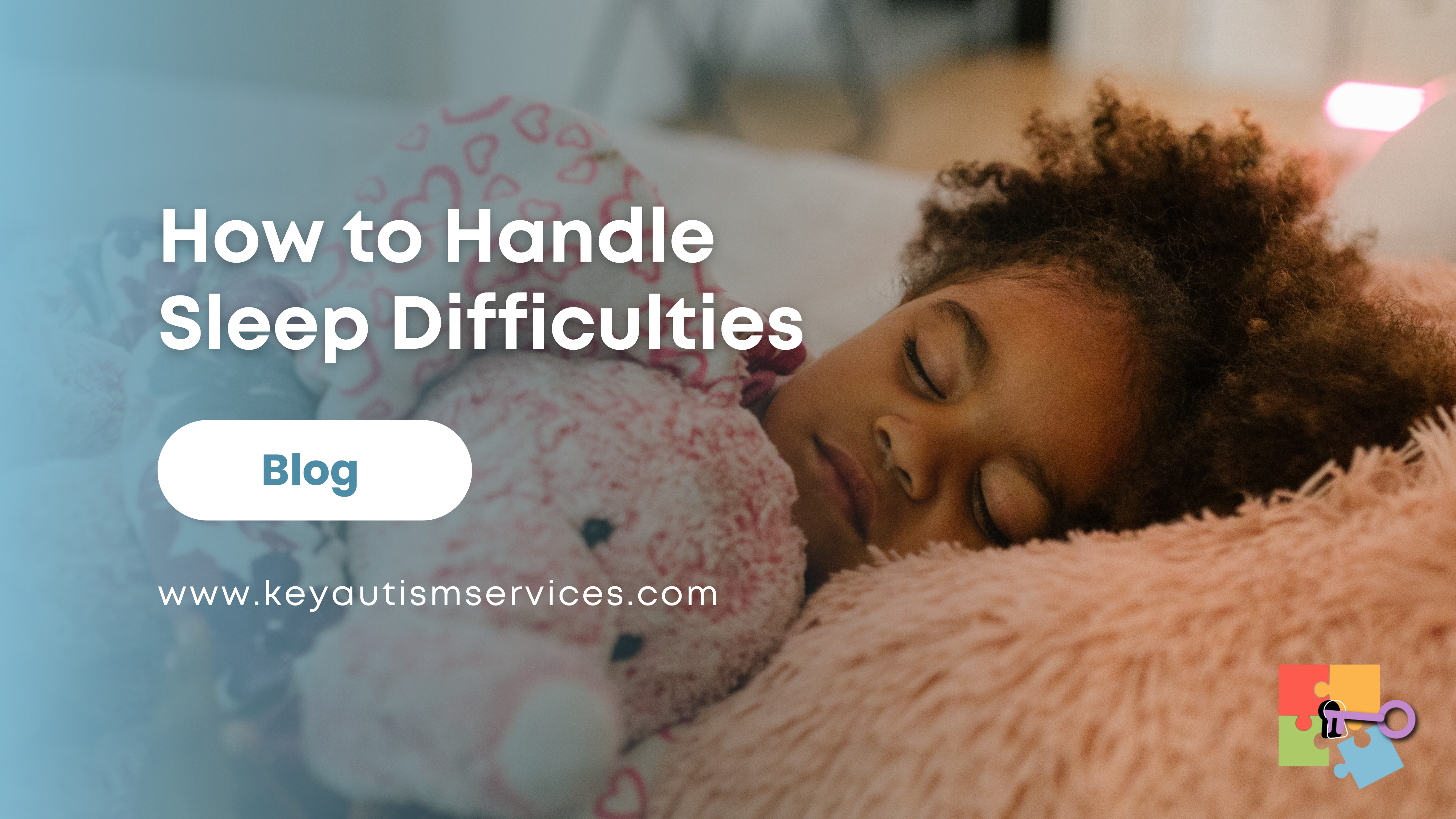The Stress of Nighttime
For many children on the spectrum, sleep and bedtime routines can be especially tough for families. Bedtime in general is hard but coupled with children who have behavioral challenges, it can be really stressful. Key Autism Services has put together a few tips and tricks to help alleviate some of those stressors around the nighttime routine. Remember that if you are receiving ABA services, this is a perfect area to focus on with your Behavior Analyst and ABA Team as they can support you with goal setting and specific strategies to meet your child’s needs.
The 6 Tips for Nighttime Routines
1. Reduce noise levels:
For kids on the spectrum, household noises like the TV, music, the dishwasher, etc. can be overstimulating or otherwise disturbing, making it impossible for them to fall asleep or even feel tired. As much as possible, try to limit your child’s exposure to household noises once they have gone to bed by using a white noise machine, or try your best to turn off all electronics and appliances.
2. Reduce light in the bedroom:
Visual stimuli can disturb your child and make it difficult to fall asleep. Keeping their bedroom dark will help limit visual stimulation. Switch to black-out curtains if there are light sources near your child’s bedroom windows.
3. Keep the bedroom cool:
Sleep experts report that a cool bedroom promotes sleep. Optimal bedroom temperatures range from 65° – 67° F. Maintaining a comfortable environment is crucial in promoting healthy sleep patterns.
4. Dress in comfortable clothes for sleeping:
Many children with ASD find certain fabrics and clothing features to be extremely irritating. Ensure that your child’s pajamas are made of fabrics that do not cause discomfort, and try to avoid zippers, snaps, and buttons that can be irritating.
5. Have a predictable bedtime routine:
Work with your child to develop a soothing bedtime routine that you can stick to every night. Keep it simple, calming, and free from electronic screens. Routines help to keep the stress factor out of the equation.
6. Stay away from stimulating activities before bed:
Use relaxation techniques such as a weighted blanket, reading a social story, taking a warm bath, listening to a calming story or soft music, reading a social story about bedtime, and taking deep breaths. The body should have a winding down period that signals the brain that it is time for sleep. Engaging in stimulating activities does the opposite.
Positive Results
Positive results should be apparent after these techniques have been used for a while. There may also be some trial and error involved. Some things may work, and some may not. There also may be variations of tools that can be implemented. The goal is to make nighttime routines and going to sleep a positive experience as opposed to a stress-filled event. The team at Key Autism Services is available to assist with sleep issues. Contact Key today for any questions regarding sleep or other behavioral issues.





